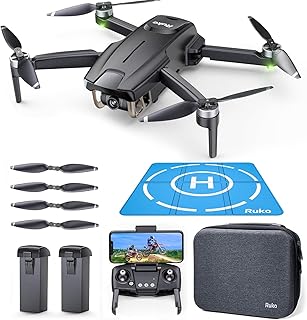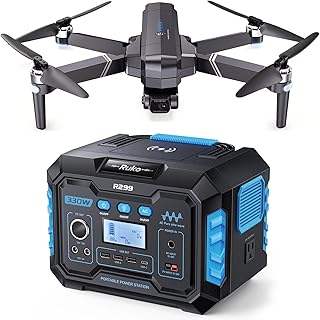Ruko Drone: Flying in Public Spaces - Considerations
Before you take your Ruko drone for a flight in a public space, it's crucial to understand the regulations and safety protocols that apply. Here's a breakdown of what you need to consider:
1. Legal & Regulatory Compliance:
* FAA Registration: In the United States, all drones weighing over 0.55 lbs (250g) must be registered with the FAA. This applies to Ruko drones as well. Registration is a simple process online and involves providing basic information about you and your drone.
* Local Laws & Restrictions: Every city and municipality may have its own drone-specific laws and regulations. Check with your local government or airport authority for any specific rules regarding flying drones in your area.
* No Fly Zones: There are designated no-fly zones where drone operation is prohibited. These include areas around airports, prisons, military bases, and other sensitive locations. You can find a map of no-fly zones on the FAA website or through dedicated drone apps.
* Privacy: Be mindful of respecting people's privacy. Avoid flying over private property, especially without permission.
* Emergency Response: Don't fly your drone near or during emergency situations like fires, accidents, or search and rescue operations. This can interfere with the efforts of emergency personnel.
2. Safety & Responsible Operation:
* Know Your Drone: Understand the capabilities and limitations of your Ruko drone, especially its flight time, range, and battery life.
* Weather Conditions: Avoid flying your drone in strong winds, heavy rain, or other adverse weather conditions. These can make it difficult to control the drone and increase the risk of accidents.
* Flight Area: Choose a safe and open area for flying your drone, away from obstacles, crowds, and busy traffic. Be aware of potential hazards like power lines, trees, and buildings.
* Visual Line of Sight: Maintain visual line of sight with your drone at all times. This allows you to monitor its flight path and respond to any potential issues promptly.
* Remote Identification: The FAA requires drones to be equipped with remote identification technology that broadcasts the drone's location and other information. This technology helps with tracking and identifying drones.
3. Etiquette & Best Practices:
* Obtain Permission: If you're flying your drone near people, buildings, or other structures, it's good practice to obtain permission from the property owner or manager.
* Respect Others: Be courteous and avoid flying your drone in a way that could be disruptive or intimidating to others.
* Be Discreet: Don't fly your drone over private property or in a way that could invade someone's privacy.
* Educate Yourself: Keep up-to-date on the latest drone regulations, safety guidelines, and best practices.
4. Additional Tips:
* Use a Drone App: Many drone apps provide helpful features like real-time flight data, flight planning tools, and no-fly zone warnings.
* Practice Safely: Before flying your drone in public, practice in a safe and controlled environment to get comfortable with its operation.
* Carry ID: When flying your drone, carry a valid ID with your FAA registration information.
By following these considerations, you can ensure a safe, responsible, and enjoyable experience with your Ruko drone in public spaces.


